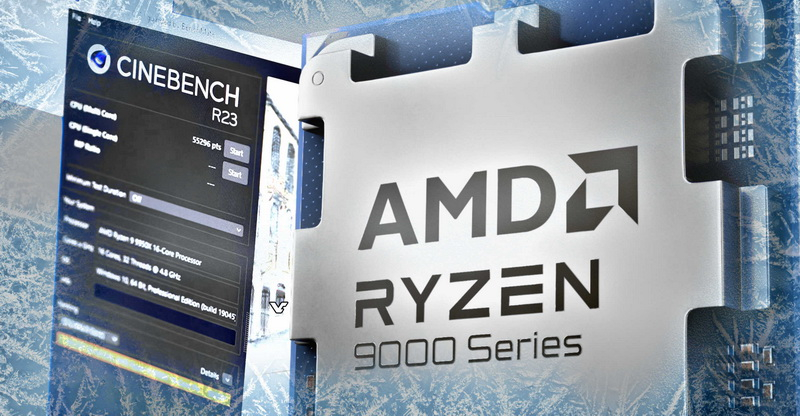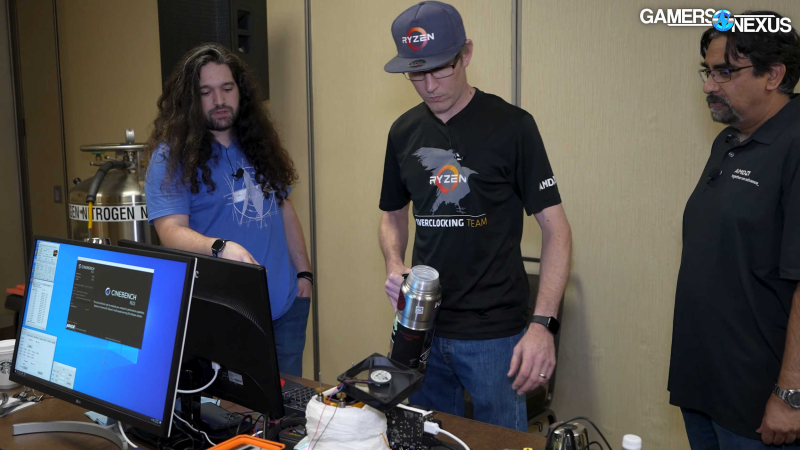A team of in-house overclockers from AMD overclocked the new flagship Ryzen 9 9950X processor based on Zen 5 architecture to a frequency of 6.6 GHz. As part of the experiment, the new chip also set several records in various performance tests for 16-core processors – previously the Ryzen 9 7950X was the first.

Image Source: YouTube/GamersNexus
For the experiment, we used the ASUS X670E ROG Crosshair Gene motherboard, intended for enthusiasts and equipped with two DDR5 DIMM connectors. Liquid nitrogen was used for extreme overclocking of the chip. To record the indicators, the proprietary AMD Ryzen Master program was used, as well as a special monitoring program developed by Asus.

After overclocking, the Ryzen 9 9950X scored just over 55 thousand points in the Cinebench R23 multi-threaded test, thereby breaking the previous record of the Ryzen 9 7950X, which was 50,843 points. The energy consumption of the chip during measurements reached 653 W. The processor temperature was about -90 °C.

The processor set the record for multi-threaded performance in this test at a frequency of 6.4 GHz. However, as noted in a video about this experiment published by the YouTube channel GamersNexus, under certain conditions the chip can operate at frequencies of 6.6–6.7 GHz.
Ryzen 9 9950X results in Cinebench R23 multi-threaded test:
- Basic configuration, without overclocking – 41,924 points;
- PBO + EXPO — 43,905 points (+4.7%);
- When using the new Curve Shaper function – 45,303 points (+8.0%);
- Liquid nitrogen – 53,557 points (+27.7%);
- Liquid nitrogen (world record) – 55,296 points (+31.9%).
According to AMD, with standard settings, the Ryzen 9 9950X is capable of producing a Cinebench R23 result of 41,924 points. When using the PBO (Precision Boost Overdrive) automatic overclocking feature in combination with AMD EXPO RAM overclocking profiles, performance in the same test becomes 4.7% faster. When using the Curve Shaper overclocking feature, you can expect an 8% increase in performance. Further performance increases of up to 31.9% can be achieved by using liquid nitrogen to cool the processor.